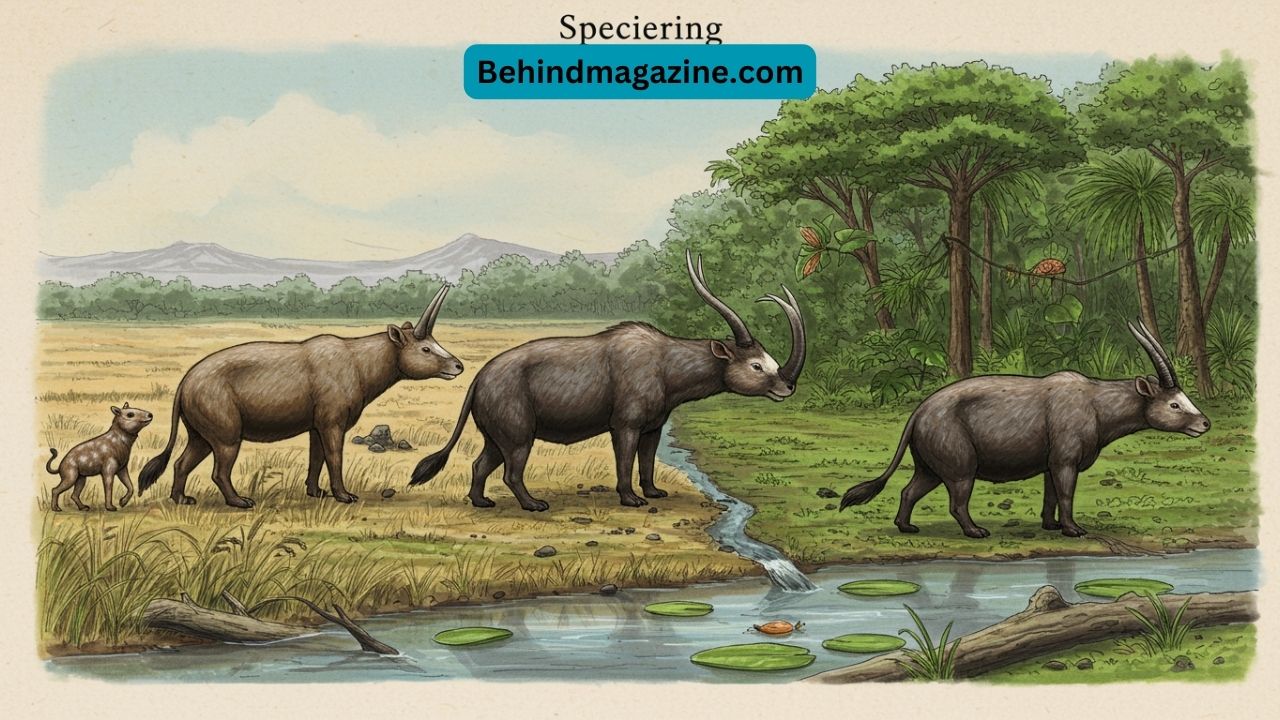What is Speciering?
At its core, Speciering can be understood as the process of defining, dividing, or structuring ideas, data, or elements into specific categories. It allows professionals to break down broad concepts into manageable segments that are easier to analyze, understand, and utilize.
In simple terms, while generalization paints with a wide brush, Speciering works like a fine-tipped pen—bringing precision and detail.
The Concept Behind Speciering
The word Speciering originates from the idea of specification and specialization. It emphasizes accuracy, detailed classification, and focus.
-
In science, Speciering helps researchers identify distinct categories in a complex system.
-
In business, it guides marketers in segmenting audiences for targeted campaigns.
-
In technology, it assists developers in structuring data, algorithms, or systems for better performance.
Thus, Speciering is not limited to one discipline but functions as a universal method for organizing and refining information.
Why Speciering is Important
The importance of Speciering lies in its ability to simplify complexity while improving productivity. Modern industries rely on accuracy and specialization to stay competitive. Without structured classification, managing large volumes of data, processes, or customer needs becomes difficult.
Benefits of Speciering
-
Enhanced Organization – Helps arrange data, ideas, or resources in a logical order.
-
Improved Efficiency – Saves time and resources by narrowing focus.
-
Better Decision-Making – Provides clear categories for analysis.
-
Encourages Innovation – By breaking systems into parts, gaps and opportunities are easier to identify.
-
Scalability – Allows gradual expansion while keeping processes structured.
Applications of Speciering in Different Sectors
1. Science and Research
In scientific fields, Speciering is crucial for categorization.
-
In biology, it helps classify species based on unique traits.
-
In chemistry, it defines molecules and their interactions.
-
In environmental studies, it separates ecosystems into measurable units.
This structured approach allows scientists to study complex systems with accuracy.
2. Technology and Data Science
In technology, Speciering drives efficiency and innovation.
-
Artificial Intelligence (AI): Categorizes datasets to train models effectively.
-
Software Development: Defines modules, making systems more reliable and scalable.
-
Data Analytics: Segments information for precise insights.
Without Speciering, tech systems would lack structure and become harder to manage.
3. Business and Marketing
For businesses, Speciering is a key to customer targeting and product development.
-
Marketers use it to group customers based on behavior, demographics, or interests.
-
Companies develop niche strategies that cater to specific customer needs.
-
It enables personalized services, which increases satisfaction and loyalty.
4. Education and Learning
In education, helps teachers and institutions:
-
Divide curricula into modules for structured learning.
-
Tailor programs for different student levels.
-
Enhance outcomes through focused teaching strategies.
Speciering vs. Generalization
One of the clearest ways to understand is by comparing it to generalization.
-
Generalization: Deals with broad categories, often overlooking details.
-
Speciering: Breaks categories into smaller, detailed segments for accuracy.
Example:
-
Generalization: “All students learn at the same pace.”
-
Speciering: “Visual learners grasp concepts faster with diagrams, while auditory learners prefer lectures.”
This demonstrates how Speciering improves clarity and personalization.
The Role of Speciering in Innovation
it is more than just categorization—it is also a driver of innovation. By narrowing focus, industries can uncover opportunities hidden within complexity.
-
Healthcare: Personalized medicine based on genetic or lifestyle categories.
-
E-commerce: Algorithms suggesting products based on specific buyer behavior.
-
Technology: AI systems tailored to industries like finance, agriculture, or education.
Each example proves that Speciering transforms general systems into specialized, high-performance models.
Challenges in Applying Speciering
Like every concept, Speciering has challenges:
-
Over-Specification – Too many categories can complicate processes instead of simplifying them.
-
Resource Intensive – Requires time, expertise, and quality data.
-
Risk of Narrow Focus – Overemphasis on small details may ignore broader perspectives.
Thus, balance is essential—Speciering must be applied with strategy, not excess.
The Future of Speciering
With industries shifting toward digital transformation, Speciering is expected to grow in importance.
Future Trends:
-
Smarter AI models using advanced classification methods.
-
Hyper-targeted marketing that focuses on micro-segments of customers.
-
Personalized education systems designed for individual learning preferences.
-
Data-driven business strategies supported by accurate categorization.
In the near future, will become central to innovation, problem-solving, and efficiency across every sector.
Final Thoughts
it is more than just a technical idea—it is a practical approach to precision and structured development. By dividing complex systems into smaller, detailed parts, improves organization, efficiency, and innovation.
From science to business, technology to education, its applications are vast and impactful. As industries evolve, Speciering will continue to play a vital role in shaping solutions, driving innovation, and ensuring clarity in a complex world.

